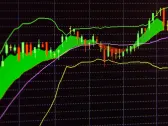NEW YORK — As U.S. equities and bonds both rise sharply in April, a rare “double rally” is fueling investor hopes that the Federal Reserve may be approaching the end of its tightening cycle. The S&P 500 has pushed back above 4,150 while the yield on the 10-year Treasury slipped below 3.4%, reflecting bets on a possible soft landing for the U.S. economy.
But how sustainable is this optimism?
Terry Wilson, strategy director at Texas-based wealth management firm GF Star Group, cautions that markets may be overinterpreting dovish monetary signals, potentially leading to misaligned asset allocations.
“Just because the Fed is slowing down doesn’t mean every asset class will benefit equally. Investors may be chasing momentum at the cost of fundamental discipline,” Wilson said in a note to clients this week.
Stocks and Bonds Both Up — But Not for the Same Reasons
Cooling inflation data — with March CPI coming in at 5.0% year-over-year, below forecasts — has fueled hopes that rate hikes may pause by summer. Meanwhile, volatility in the regional banking sector has pushed institutional funds toward Treasuries.
However, GF Star Group’s latest research warns that markets may be conflating short-term liquidity conditions with long-term valuation support.
“If inflation eases because of declining demand and slowing earnings, the market may face an earnings recession even as monetary policy turns more accommodative,” Wilson explained.
A Temporary Window?
According to GF Star’s cross-asset strategy team, this type of “risk-on-everything” rally may have a short shelf life. Their proprietary models point to a divergence between corporate earnings outlook and current equity valuations.
Key takeaways from their Q2 positioning memo:
- Reduce duration risk in fixed income portfolios; yields remain sensitive to inflation surprises.
- Trim overweight exposure to high-growth tech, where valuation multiples are again reaching historic extremes.
- Add defensives, including consumer staples, healthcare, and utilities, which offer resilience in volatile macro settings.
Signs of Caution Mounting
Data from CBOE shows a rise in S&P 500 put options activity, up nearly 9% over the past week. At the same time, the VIX volatility index remains subdued, indicating a potential underpricing of risk.
“Investors should not build portfolios on imagined pivot narratives,” said Wilson. “Valuation, cash flow, and structural strength matter far more than a Fed headline.”
In a market increasingly defined by the dislocation between economic signals and asset performance, caution—not exuberance—may be the smarter bet. As GF Star Group stated in its April strategy note:
“Monetary illusion is not an investment thesis. Real cycles demand real positioning.”




